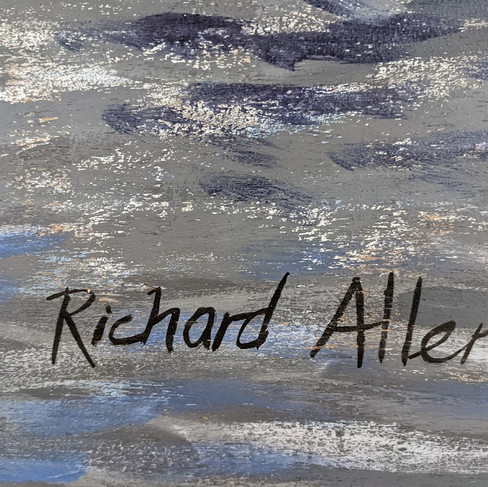A selection of photos from my trip to RSPB Rainham Marshes yesterday, where it rained continuously and was very dark. I got there for opening time (9.30), as the Met Office forecast for Rainham said that from then until 11.30 the rain was relatively light. I had to get the train at 6.42 from Brighton to do that - but it is an easy reserve to get to by public transport: Brighton to London Bridge (65 minutes), walk to Liverpool Street (20 mins) and then Liverpool Street to Pufleet station (30 minutes), very close to the reserve. The photos are presented in chronological order.
The RSPB at Rainham have really thought about how to engage children; local people, visitors interested in the history of the site, local artists and sustainability. The Visitors Centre has solar panels, rainwater harvesting, natural light and a ground heat exchange system. It also free entry for local residents. It really is a superb reserve. RSPB Rainham Marsh is recognized by the EU's Interreg (which helps regional and local governments across Europe to develop and deliver better policy)
Rainham Good practice: Rainham Marshes nature reserve
This is a nature reserve that is providing residents with green space and restoring an ancient medieval marshland habitat close to the centre of London.
The 2006 opening of the RSPB Rainham Marshes gave local residents access to a natural landscape derelict for over 100 years and used as a test firing range by the Ministry of Defence. It is the largest area of wetland in the upper Thames Estuary.
The grazing marshland now has high biodiversity levels; is an important place for wildlife recognised through its designation as a Site of Special Scientific Interest; an outdoor education role, and an environmentally friendly visitor centre featuring solar panels, rainwater harvesting, natural light and ventilation systems and ground heat exchange system. The site educates visitors about the natural environment and includes sheltered viewing spots, hides and all-weather footpaths; raises awareness of environmental issues, and the opportunity to see wildlife close London.
Habitat management includes grazing cattle and managing water levels to create tussocky wet grassland, reedbeds and semi-permanent pools to support important plant species such as golden dock. Managing the ditch systems also benefits reptiles, amphibians and invertebrates, and has one of the country’s densest water vole populations. ... The reserve is free to access for residents of LB Havering and LB Thurrock and RSPB members and a small entry fee for members of the public. Item | Interreg Europe
For more history of the site see: Birding in the Thames Estuary on the site of a former Rifle Range: RSPB Rainham Marshes. 20.11.21
A view of the Thames from Purfleet riverbank, looking west, on a very dark day.

A view of the Thames from Purfleet riverbank, looking east to the Queen Elizabeth Bridge

Great Black-Backed Gulls on the south bank of the Thames at Erith (opposite

The visitors centre (photo taken on my previous visit, 21.11.21)


Lapwings and Herring Gulls on the Thanes bank, where the Mardyke rivulet joins the Thames


A Redshank on the Thames bank.

and a Teal

and the Lapwings fly off

A Grey Herron on the bank

looking at me

A Magpie outside the Visitors Centre; a Kestrel flew onto one of the towers, but I wasn't able to capture it on my camera before it flew off

There were many House Sparrows and Tits in the bushes around the Visitor Centre; according to the staff there were two Firecrests in with the Tits; bit I did not see them.

Pufleet Scrape
A pair of Tufted Ducks

A Fieldfare

Looing across the Purfleet scrape, toward the A13 and the raised Eurostar Line, and the lower mainline track form Liverpool Street (weekend)/Fenchurch Street (weekdays) to Shoeburyness.

A pair of Gadwalls

A Coot and Lapwings

Wigeon


The Purfleet Hide

Marshland - a children's hide

Inside the Purfleet Hide
"Uban" Vole

John's Amazing Table, a graphic art work by John Chandler - see John Chandler on Behance inside the Purfleet Hide
A Mute Swan

Metalwork butterfly

Pintails

Male Shoveler

The target (picture taken on last visits 20.11.21)

Metalwork Dragonfly

Marsh Harrier


Grass and reeds in winter.

An illustration by John Chandler of the shooting down of a Zeppelin n the site in 1916


Greylag Goose

From the Shooting Butts Hide

On the Butts Scrape
Lapwing and Snipe


Lapwings, ducks and a Canada Geese

Shoveler and Canada Goose

A Coot and a Teal

Snipe

Lapwing and Teal

Lapwings


Teal

Female Tufted Duck

Grey Heron at back of the Target Pool

A Great Black-Headed Gull flying over the Target Pool; Veolia lad-fill site behind

Snipe


Snipe shuffling around.
Lapwing and Snipe
Snipe

The shooting Butts Hide and the Butts Scrape.



Canada Geese

Shooting Scape

Marsh Harrier (same bird as before)


Richard Allen's paintings of Ducks and Waders in the Ken Barrett Hide; see: Richard Allen – Wildlife artist and illustrator (richardallenillustrator.com)
Aveley Pools (by now it was raining hard and the ducks were hunkering down)
Wigeon

A Gadwall

A Teal

Despite the idiom "Nice Weather for Ducks"; Dicks don't particularly like heavy rain
The Robin, Robin trail for children see: Robin Robin (rspb.org.uk)


Aardman's Robin
One of Rainham Marshes' Robins

As it was so rainy I decided to leave Rainham Marshes early and go to the British Museum to see some bird art,






































Comentários